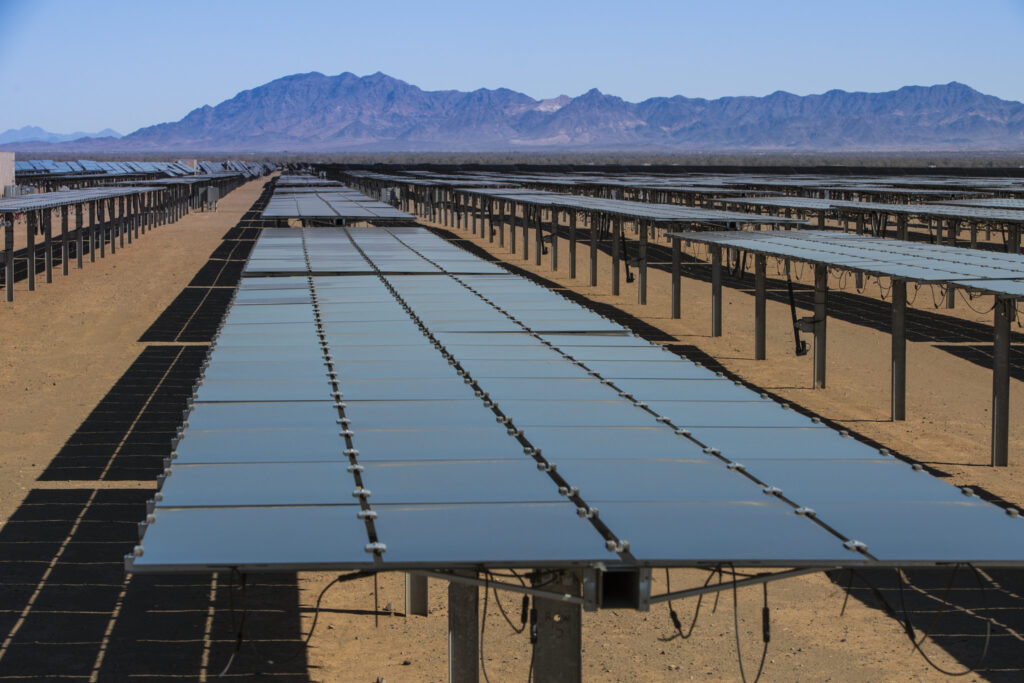This article was originally published in Reason.
President Joe Biden’s new $6 trillion budget proposal calls for massive spending increases to advance his climate and infrastructure plans, which include everything from upgrading the nation’s electric grid and building new transmission lines to investing in electric vehicles and other clean-energy technologies. But spending money is one thing. To deliver on its green pledges, the Biden administration will have to do something its environmental supporters are often reluctant to do: Cut the red tape that delays or derails the very development projects needed to build a clean-energy future. It will also have to make tough environmental tradeoffs that sometimes come along with such projects.
One test is unfolding in Nevada in a fight over a planned lithium mine and a rare desert wildflower. A mining company, ioneer Ltd., has proposed building a large-scale lithium-boron mine in western Nevada (the first of its kind in the United States) to supply materials for electric vehicle batteries, wind turbines, and other clean-energy technologies. If approved, the mine could quadruple domestic lithium production and help build 400,000 electric cars each year, according to the company’s estimates, helping to advance Biden’s goal “to win the EV market.”
But a rare plant may stop the project from breaking ground. The site is also home to Tiehm’s buckwheat, a pale yellow wildflower that is only found on a 10-acre patch of lithium-rich soil within the project area. Last year, the Center for Biological Diversity, a litigious environmental group, sued the U.S. Fish and Wildlife Service, demanding emergency protections for the buckwheat to block the mine. On Thursday, in response to a court order, the service proposed listing the buckwheat under the Endangered Species Act. The Biden administration now has until September 30 to issue a proposed rule to protect the plant, which could all but doom the lithium mine.
It’s a familiar story: A tangled web of environmental laws and regulations gives litigious groups ample opportunities to stall development projects or thwart them altogether. That strategy works well when environmentalists’ goal is to stop things from happening, but it’s likely to be a major obstacle to building the infrastructure and technological capacity to achieve Biden’s clean-energy vision, which will require many new mining operations, solar and wind farms, transmission lines, and other forms of development.
Another proposed lithium mine in northern Nevada now faces two lawsuits seeking to block the project. Several large-scale solar and wind projects in Washington, Nevada, Indiana, and Virginia are being opposed by local residents and environmental activists, including the Sierra Club. Meanwhile, dozens of shovel-ready transmission projects across the country remain tied up in permitting battles and environmental reviews, some for more than a decade. It now takes four and a half years on average to complete environmental impact statements for such projects—not to mention delays from any resulting legal challenges—meaning Biden could be out of office before any new ones get underway.
In March, Energy Secretary Jennifer Granholm announced $30 million in grants for research to “ensure American businesses can reliably tap into a domestic supply of critical elements and minerals, such as lithium, cobalt and nickel, needed to produce clean energy technologies.” But if mining projects get blocked by environmental regulations, no amount of government support will matter.
Biden’s climate goals will instead require finding ways to say yes to projects, often large ones, which will almost certainly have local environmental consequences. Yet the White House’s 25-page summary of its infrastructure plan has just one line on permitting challenges, stating that the administration will use “smart, coordinated infrastructure permitting to expedite federal decisions while prioritizing stakeholder engagement, community consultation, and maximizing equity, health, and environmental benefits.” The lack of detail has raised concerns from some clean-energy advocates and members of Congress. “There’s no point in allocating around $3 trillion dollars to do this if it’s just going to be weaponized by the courts and weaponized by environmental groups,” Rep. Dan Crenshaw (R–Texas) said last month at a hearing on modernizing the electric grid. “The law has to be changed.”
One way Biden could speed up permitting is by embracing the Trump administration’s overhaul of the National Environmental Policy Act (NEPA), the law that mandates environmental reviews of major federal actions. Former President Donald Trump’s reforms have been criticized by environmentalists, but presidents in both political parties have long sought to streamline the NEPA process. In 2011, former President Barack Obama issued a memorandum directing federal agencies to “take steps to expedite permitting and review,” including “setting clear schedules for completing steps in the environmental review and permitting process.” Last year, Trump finalized new NEPA regulations that did just that—cutting paperwork requirements, placing a two-year time limit on environmental impact statements, and excluding more projects from the most stringent form of environmental analysis. The Biden administration says it will rework Trump’s NEPA rules, but it has so far declined to reject them entirely, suggesting it may view the changes as necessary to getting its infrastructure plan off the ground.
Environmental problems involve tradeoffs, and clean-energy policy is no different. The Biden administration will have to acknowledge this if it’s going to come anywhere close to meeting its ambitious climate goals. That means admitting that ever-more restrictive regulations aren’t always the answer—and that endless environmental review requirements cannot will away the reality of environmental tradeoffs.




